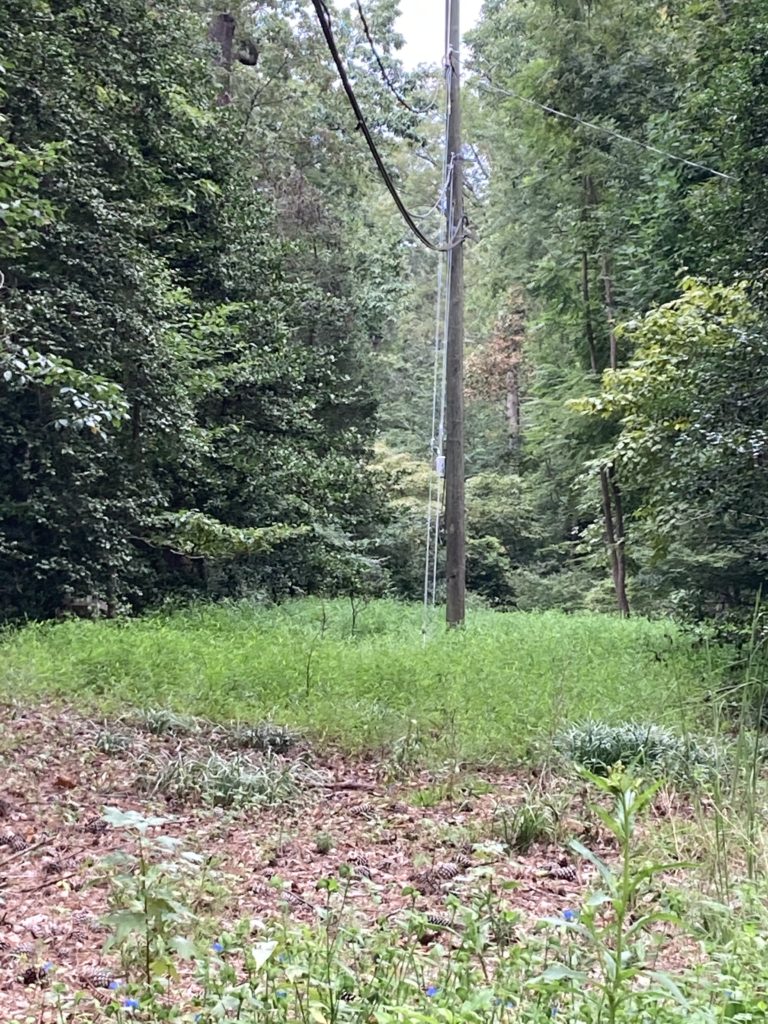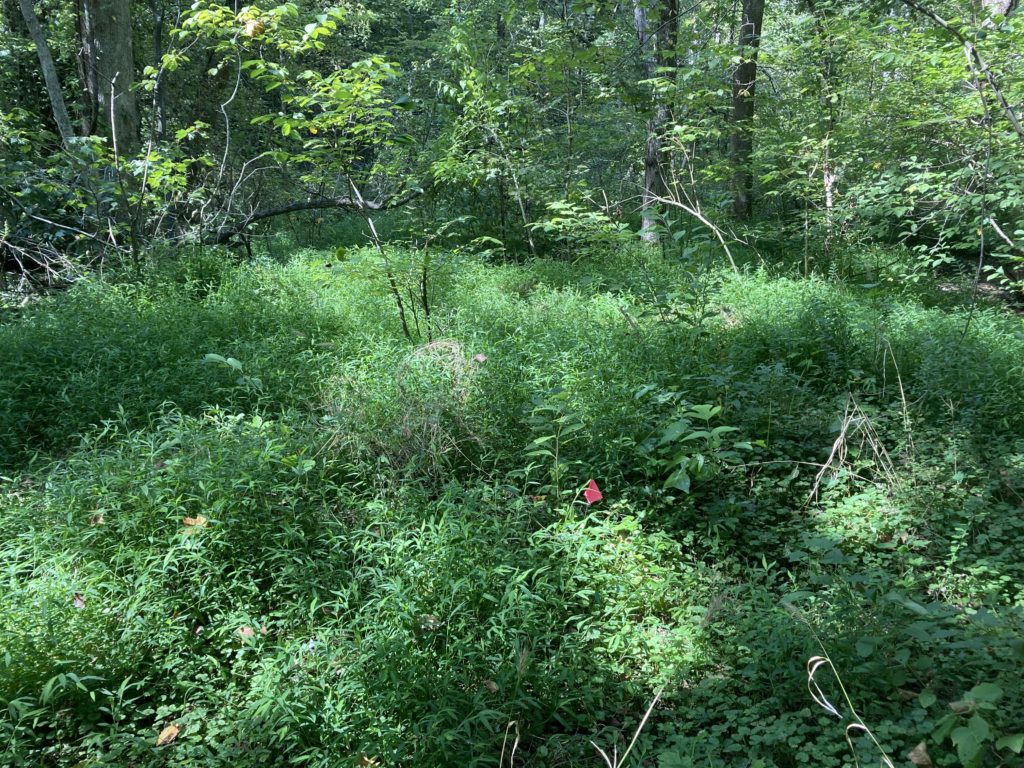
When you’ve spent years immersed — often literally! — in invasive plant management, seasonal
changes become associated with certain species. This is particularly true of Virginia’s most
widespread forest-invading annual grass, Microstegium vimineum or Japanese stiltgrass, as it is
most commonly known. August might mean vacations or back-to-school to most, but for me it
signals a top priority: time to confront stiltgrass once again.

The reason is simple: it’s in late August and early September that stiltgrass is on the verge of
flowering and going to seed. To effectively interrupt that reproduction cycle, you have to mow,
whack, or pull stiltgrass neither too early nor too late. In Richmond, the time is NOW!. So if you
recognize this habitat destroyer from your own yard (check street edges where its abundant
seeds can hitch a ride downstream by way of stormwater runoff), please dedicate some time
this holiday weekend to cutting it off at the pass (actually, you will want to cut it right down to
the ground).

I wrote about stiltgrass management a year ago in the Urban Forest Dweller feature August is
for Defeating Stiltgrass where you can find what you need for identification and control
recommendations. Whether cutting or pulling, be sure to keep an eye out for known or
suspected native plants and work around them. They are our allies, and getting rid of stiltgrass
is essential to sustaining late summer and early fall wildflowers and other native plants.



